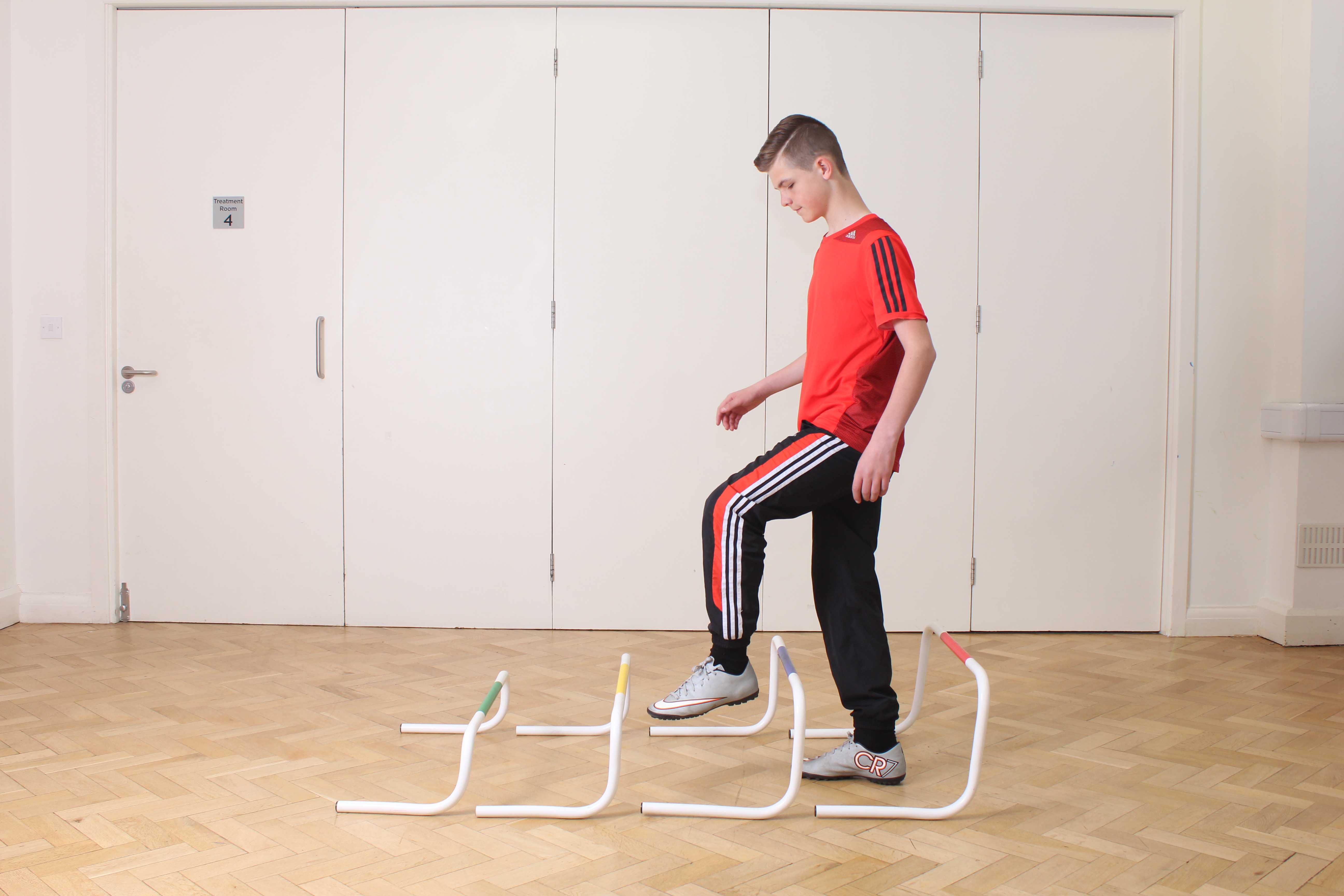What causes a slipped upper femoral epiphysis?
A slipped upper femoral epiphysis is caused by an increase in force being applied to the epiphysis or a shearing affect due to decreased resistance within the epiphysis. Anatomical factors such as the position and shape of the acetabulum and femur can also be a factor.
 Above: Balance and co-ordination exercises supervised by a paediatric physiotherapist
Above: Balance and co-ordination exercises supervised by a paediatric physiotherapistIt is also commonly seen during a growth spurt which can cause abnormal movement within the hip making the child more susceptible. There are several risk factors which may add to the likelihood of this injury occurring such as:
- hormonal abnormalities
- obesity
- bone problems related to kidney disease
- genetic predisposition
- medications
- radiation treatment
- chemotherapy
What problems caused by a slipped upper femoral epiphysis can physiotherapy help with?
Physiotherapy can help with a number of symptoms regarding a slipped upper femoral epiphysis including:
- Pain in and around the hip, groin and knee
- Poor walking pattern (gait)
- Decreased range of movement in the hip joint
- Poor positioning of the foot
- Decreased balance
- Decreased function
 Above: Mobility rehabilitation exercises to stabilise and strengthen the hip
Above: Mobility rehabilitation exercises to stabilise and strengthen the hipHow is a slipped upper femoral epiphysis diagnosed?
A slipped upper femoral epiphysis is diagnosed after a comprehensive subjective and objective assessment is completed by an experienced physiotherapist. If the physiotherapist suspects a slipped upper femoral epiphysis then an x – ray will be ordered to confirm the findings. Surgery and rehabilitation will be required to prevent serious growth abnormalities and disability.
Medical Treatment
As soon as a slipped upper femoral epiphysis is diagnosed then the patient should be non weight bearing. It is treated as a medical emergency as further slippage could cause a blockage of blood to the head of the femur, causing the bone to die.
Medical treatment involves the patient going under anaesthetic so the orthopaedic surgeon can insert one or two pins into the head of the femur so it can be made secure and prevent any further slippage from occurring. Following surgery, physiotherapy input can commence straight away.
The benefits of physiotherapy for a slipped upper femoral epiphysis?
There are many benefits to seek physiotherapy treatment following a slipped upper femoral epiphysis. They include:
- Decreased pain
- Increased range of movement
- Improved gait pattern
- Improved balance
- Return to function and sporting interests
What would physiotherapy treatment for a slipped upper femoral epiphysis involve?
Physiotherapy treatment for a slipped upper femoral epiphysis is specific to each patient but may involve:
- Heat and ice therapy
- Range of movement exercises
- Strengthening exercises
- Education on walking aids and gait pattern
- Balance exercises
- Gradual return to function and sport specific exercises/drills
Summary
A slipped upper femoral epiphysis is a serious and common injury in adolescents. Urgent medical treatment is required followed by intensive physiotherapy to reduce the chances of disability in the future and to allow the patient to return to function with the best possible outcome.
How do I arrange a physiotherapy assessment for a slipped upper femoral epiphysis?
If you or someone you know has a slipped upper femoral epiphysis and think that you would benefit from seeing one of our experienced physiotherapists then you can either email us at office@physio.co.uk , call 0800 033 7800, or book online today!

 0330 088 7800
0330 088 7800


































